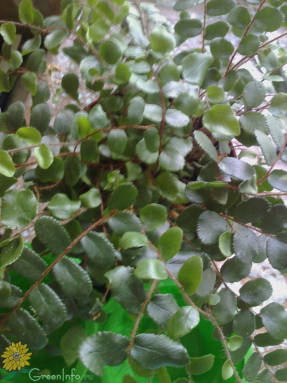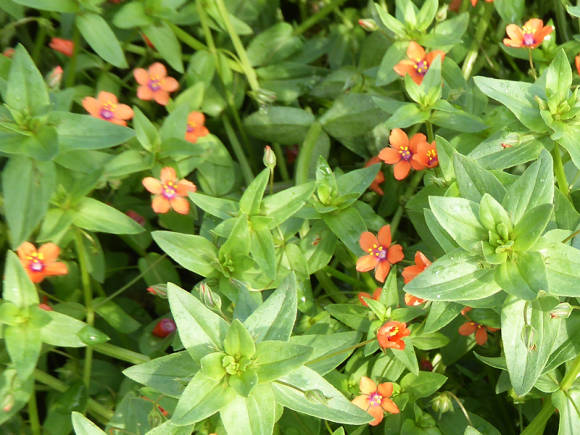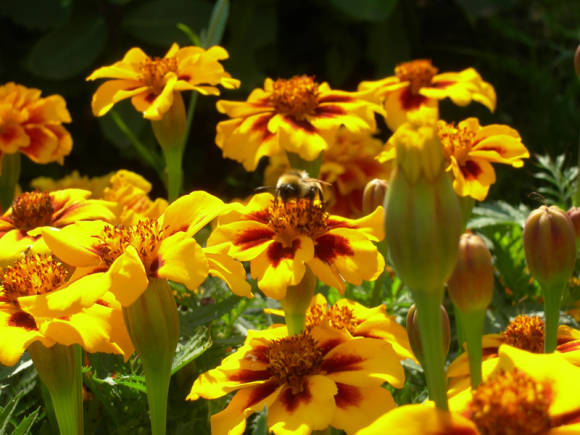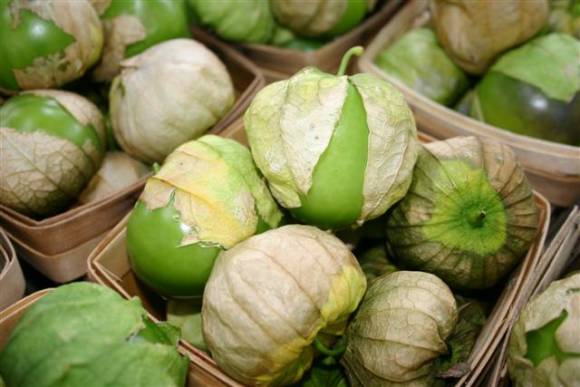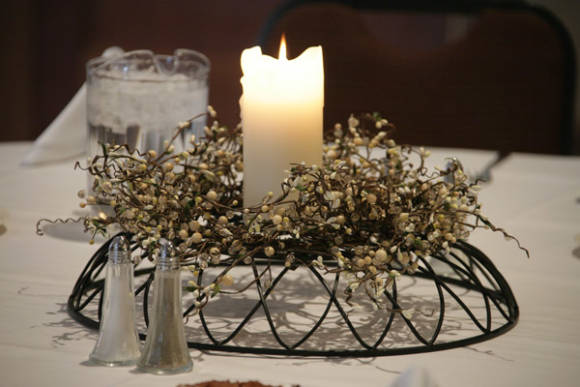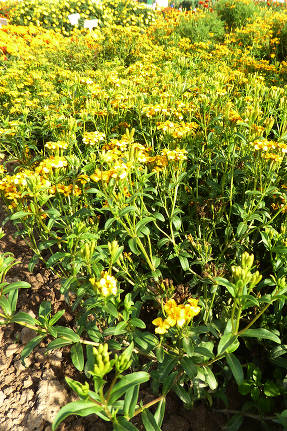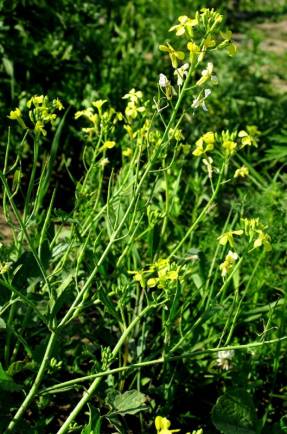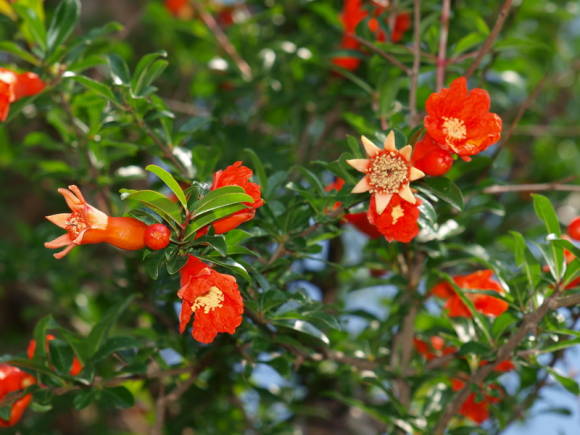Making paper flowers and wreaths was one of the few legal ways to make a million in the USSR. This trade was usually carried out by families, turning apartments into workshops, and garages and sheds into warehouses for finished products. Particularly successful were those who started early, back in the period of "developed socialism," and managed to lick the cream off. Then the profitability of the business gradually fell, until the plastic Chinese flowers finally finished the once profitable craft.
 |
But besides paper flowers, there were still dried live ones. And the best-selling dried flower was the nap cone - the thorny fruit of the tease herb.
Flannel comb
Now no one knows, and before that very few people were interested, that until the beginning of the 1960s in the "advanced" technology for the production of fabrics with fleece, on an equal footing with the motor and the glands of the machine, a vegetable thorn called a nap cone participated. Yes, yes, it was not a raw material, but a part of the machine - a kind of replaceable comb, with the help of which the ends of the fibers of the fabric were combed out. In this way, flannel, pile cloth, drapes and a whole range of fabrics, which were called by experts nailed, were produced in this way.
In the entire USSR, there would probably not have been a person whose body did not come into contact with these sturdy and warm tissues. Men, from old man to young man, were insulated in winter with flip-flops. Women and children wore a miracle in winter what warm underpants made of combed bikes. And all together, from preschooler to pensioner, they were forced to use ski suits made of wool with fleece. Even I myself, unaware of that, was closely tied with this thorn through my leggings and warm trousers with fleece pulled on top of felt boots, my warm flannel shirt and woolen sweater. All this was on me, when, rolled in the snow, all in burrows and a string, I crawled out of a nearby ravine, barely alive, and appeared before my parents' eyes. In the language of his father, this pictorial performance was called the return of the prodigal son.
Romanian and his business
 |
He came to our "village" on the outskirts of Vladimir in the early 1960s from somewhere in the Carpathians, and was such a colorful figure that the whole district, having ceased to be interested in other news for a while, switched to him alone.
It all began, however, quietly and routinely. The fact that one of the sturdy log houses changed owners was not news of the day, in that house very few people knew the previous inhabitants. But soon the strange behavior of the new tenants aroused general interest. It began with the fact that the newcomer erected another brick shed with large swing gates to the already existing shed. This was done so quickly that it caused a lot of rumors in itself. We didn't have it that way. It was supposed to be built for several years. Moreover, all the neighbors learned about the owner's intentions ahead of time. And here, yesterday there was nothing at all, and suddenly in a week - a ready "tower" under an iron roof. Where did this newcomer come from, in the city for a week, so quickly found his way - where to buy a brick and what kind of bricklayers to hire ?!
This shed, however, turned out to be a garage, from which a vehicle unprecedented for the immediate vicinity soon rolled out - the Volga GAZ-21. In that distant 1963, this meant something more than prosperity. The people then said that one salary couldn't buy a car, and it was so.
The real name of our new neighbor was known to a narrow circle, for the majority he was Romanian. Whether he was definitely a Romanian, or maybe a Hungarian or a Slovak, will remain a mystery. It was rumored that he was born and lived in places that were abroad until 1939, and went to the USSR under the Molotov-Ribbentrop Pact.
Not knowing who a Romanian is, soon became indecent, and then completely impossible. For no one aroused such interest in himself, did not produce so many conjectures about himself. A man of about forty, short, lean build, broad-shouldered, he was outwardly unremarkable. There was, however, a slight accent in his speech, which could be mistaken for a southern dialect.His friendliness and smile were somehow non-Nashen. They also said that he knows how to brew beer. One of his neighbors even earned the right to be his constant drinking companion. But this neighbor was not unusually chatty, and if he told something about Romania, it was so respectful that he only added fuel to the fire.
Hard-working and enterprising, the Romanian fully possessed what was later considered an entrepreneurial streak. But then it looked like ordinary adventurism. From the current position, it seems that he simply was not afraid of Stalin, did not know what a collective farm and the elimination of the kulaks as a class were. There was in his character decisiveness and consistency that were completely uncharacteristic of local peasants. While apple trees were growing in all "normal" gardens, he, without any torment, in the very first weeks after the housewarming, organized such a pogrom that by this alone he awakened unprecedented unrest in the public consciousness.
To cut down all the apple trees in early August, and together with the ripening fruits, carry these "firewood" into the nearby ravine !! There he, without fiddling around, took out on a trolley old boards and the darkness of all "valuable" junk, which the natives instantly took home. The people whispered in fascination, exchanged glances, looking at such an absurd behavior of the new settler, watching what would happen next. And then it was autumn, and Romanian's garden was completely covered with even standard ridges. In the spring, when the time for germination came, the area was covered in tulips. Everything fell into place.
 |
The fact that the Romanian was growing and selling cut flowers “in extra large sizes” was in itself extraordinary courage. But we, local boys, were most outraged by his wrong attitude to the car. He did not go fishing or to the beach, and he did not even "bomb" with a cab. While all car owners dressed up their carriages, he treated the car worse than a drayman did to his cart. As I remember now, this behavior seemed outrageous to me. Now I would justify Romanian with only one argument - "labor makes free." But then, I was 11 years old, and my concept of freedom was primitive. I brushed aside the "realized necessity" as an inedible surrogate. If I had my own "Volga", then I would have thrown school and boring textbooks on the figs, I would have bought a camping tent, spinning rod, a gun, and would have started a free life, moving from place to place!
But the Romanian did not understand anything about real freedom. His car practically did not know other passengers than himself and his wife. Stuffed to the eyeballs with tulips and gladioli, she scurried about the markets, so that soon Romanian was recognized in almost all regional centers from Vladimir to Moscow.
But he didn't stop there. Soon he began to disappear from time to time somewhere, and after that he and his wife secretly unloaded the car in the evening. Only the ubiquitous boys saw how they dragged into their spacious shed and hung bunches of some thorns on the shelves. They dropped one of them, and for a long time we twirled an incomprehensible dried plant in our hands - something like a huge turnip on a stick.
It was a nap or nap - a plant that is an excellent dried flower. Gradually, naping became the main direction of Romanian business. Through the door of the barn one could see that there were many thousands of thorny fruits. It was impossible to sell such a quantity with us, because it was in good demand only on Easter and memorial days.
That memorable era of widespread scarcity for enterprising people was paradise. The outlandish plant has found its buyer. In local cemeteries, in almost every flower girl, a dry flower, well preserved all summer, of carmine color, stuck out. On the eve of the bad days, Romanians were spinning a squirrel in a wheel, delivering goods to their dealers in other cities. Easter for him and his wife was like New Year's Eve for the champagne sellers. There were two cemeteries in the city, and in both there was a brisk trade in dried flowers.
His other half was especially dexterous in this matter, he gave her the most lively place. The envious neighbors claimed that the people went to her as to the Mausoleum. Three assistants helped her to manage, they served flowers, but only the hostess accepted the money. I myself once saw her doing this work. Her hands fluttered like the hands of a weaver-weaver - not a single superfluous movement, not a single empty word. Today's tradesmen would simply go crazy from this sight.
O! It was a poem! The apotheosis of a monetary symphony, a virtuoso scherzo for state bank tickets, Appassionata on treshnitsa and chervonets !! With non-vain and precise movements, in which both hands participated in milking a cow, she forwarded the banknotes to a special cloth bag attached somewhere below the abdomen. Being an empty pillowcase in the morning, by the end of the day this "wallet" became a whipped thought. How many there were, we could only guess, but as if it was not at all the pennies for which the highly paid Soviet miners worked hard.
I will note that my fellow countrymen loved to count other people's money - do not feed them with bread. A year later, there was a steady rumor about Romania as a real Soviet millionaire. You can judge for yourself what a million rubles meant in 1964 - a good house in the city that year was sold for 5,000 rubles. But who would say, looking at him, that a thousand Khrushchev's "new" rubles is not money for him. He dressed modestly, even unprepossessing - if you met on clothes, there was nothing to look at. The people, however, "were aware" of all his financial affairs and promoted him "in black". He himself did not participate in conversations about his welfare. “Money loves silence”, “do not wake up dashingly while it’s quiet” - these rules Romanians strictly adhered to. However, there were no such threats to his business. The word racketeering was then absent in the dictionary, although there was another - OBKHSS. But even here, apparently, everything was sewn-up, in any case, the tax agent, they say, came to see him.
Now, when every more or less rich merchant dresses to the nines and boasts of a jeep bought on credit, I see a Romanian as almost a Franciscan monk who has taken a vow of begging. He, no doubt, had more to his soul, but did not show any claims to luxury. Except for the car, and for the Romanian she was only a means of transportation, then he was no different from his neighbors. His house was outwardly modest - an ordinary hut. His only weakness was his daughters, who were almost my age. But even here his sense of proportion did not fail him. And as for their blue pants with the "Levis" patch, by God, they were perceived as workwear by all neighbors.
As the Romanian appeared, he disappeared - he departed in an unknown direction. They claimed that he bought another house, either on the outskirts of the capital, or in it. Surrender, he is now found somewhere there. I wouldn't be surprised if his last name is on the Forbes list, well, at least in the second thousand. I would be sincerely glad for my fellow countryman, because I consider his method of enrichment the most worthy. After all, not a single guest worker, except for his wife and daughters, was seen on his site. God knows he did not harm socialist property either. The daughters, by the way, had more than adequate remuneration for their efforts. In any case, they did not know for sure that they would refuse their simple, by today's standards, whims.
After his departure, several people continued to cultivate the pile. But where were they, the pitiful apologists, before him! Inspired by the genius of the market economy, they had neither his mind nor his grasp. Therefore, their business did not flourish, but only glowed. Not flaring up, it soon faded away quietly.
So you know
Genus teasel (Dipsacus) the family of teasers has more than 28 species. The flowers of the teasers are collected in dense oblong or spherical inflorescences-heads.
 |
The name of the nap cone refers to the largest of the teasers - the sowing nap. (Dipsacus sativus) - a biennial herbaceous plant 100-200 cm high with strong furrowed stems.The flowers of the teasel have a bluish-lilac color, exactly the same as that of the widespread relative of the teasel, the scabbard. The stalks of the teasers are strongly ringed, separate thorns are even present on the leaves. Compound fruits are "equipped" with far protruding hook-shaped awns, which were the working elements of the cones when combing the pile.
The natural habitat of the common tease is the south of Europe. But long-term cultivation in culture has significantly distorted the boundaries of its distribution. As an alien plant, tease can be found even in our middle lane.
Teasing of fabrics was the process of combing the pile by pulling out the ends of the intertwined fibers from the thickness of the fabric. Thus, a flannel, a bike and a beaver were obtained, cloth and drape were trimmed.
For many decades, breeders have been busy selecting the largest, abundantly "bristled" cones, close to a cylinder in shape, with strong long peduncles. It was these that later turned out to be the most demanded as dried flowers.
In the production of fabrics, nap cones, according to the size of the "working part", were subdivided into nine numbers from No. 1 (27-34 mm) to No. 9 (over 90 mm).
Lump # 9 + eosin = $
In the absence of plastic flowers, dried flowers competed with paper flowers in the market. Moreover, the handicraft making of flowers looked more laborious. But it is not so. Of course, for the production of flowers, equipment was needed: cuttings, punches, molds ... There was nowhere to buy all this. But in those days when we frightened America to death with our rockets, talents were found not only among pianists and chess players. Much more of them hung around in countless design bureaus and research institutes. Locksmith toolmaker is a working profession, but without an upper level of skill. "Stimulate" such a nugget financially, and he will bungle you on his knee, not like a punch, a cruise missile. Two or three hundred rubles invested, and now you are the head of the department for the production of consumer goods, for the sale of which you can not worry.
But Romanian for some reason rejected paper flowers, and chose a nap cone. And he made the right decision. Before his appearance, no one knew the tease, maybe that's why she went so well. In essence, he himself created a market niche that did not exist before him. Teasel was also good because, in addition to the qualities of a wonderful dried flower, it is transportable and can be stored for a long time. If you skillfully paint it, then it turns from a reddish-brown thorn into an exotic flower right before your eyes.
 |
The Romanian showed ingenuity here too. The neighbor with whom he sipped beer worked at a large thermal power plant. And there were many recorders that used eosin-based red ink. This neighbor once threw a whole flask of eosin powder over the fence of his native enterprise. A flask of eosin is, who understands, very cool! Perhaps the entire CHPP consumed so much of it in about six months. But nothing - got along! "The economy must be economical!" - the party just called on the Soviet people. But from that time on, the Romanians did not know grief. He diluted eosin with water in a bucket, and, without hesitation, dyed the cones by dipping right in the yard.
So, the technology has been worked out, sales have been established - what else is needed - cut coupons and live for your pleasure. But the Romanian did not calm down even here. Although the source of infertility was inexhaustible, they had to travel far. Why not grow the bud on site?
The main obstacle to the cultivation of teasels in central Russia is frost. Therefore, the steppe part of the Crimea and the southern regions of Ukraine were the main suppliers of the nap cone. In our country, the teasel wintered for two winters almost without losses, on the third it was very cold. In general, Romania did not manage to completely get rid of "imports". But the scheme he came up with was the most rational: he bought half of the cones, half he grew himself. And the safety stock allowed him to cope with all kinds of surprises.
Spied on Romanian
Seeds of cultivated tease are similar in size to small brown rice grains. For their preparation, the largest and most beautiful seed fruits are chosen. They must be plucked after full ripening, but without delaying for a long time, since when the plants are swayed by the wind, the seeds gradually spill out, and first of all the best ones. Cones are carefully cut off with peduncles, taken to the room and, after drying, shake, freeing from seeds. Then they are sifted several times through sieves, rejecting underdeveloped and small ones.
For growing teasers, they choose places protected from cold winds, open to the sun with light loamy, permeable soil. The soil is prepared in autumn, dug deeply, filled with manure humus (10-15 kg / m2). Seeds are sown in early spring in rows with row spacing of about 60 cm, to a depth of 2-3 cm. They are sown individually every 3-5 cm. In early June, the seedlings are thinned out, leaving one plant by 10-15 cm.
In the first year, plants develop only basal rosettes of leaves. In the fall, immediately after leaf fall, the seedlings are sprinkled with soil or, better, sprinkled with peat. After wintering, the plants are uncooked, and after they start growing, they are finally thinned out, leaving one plant by 20-30 cm. When the tease has released a flowering stem, it is cut off over the second internode. This stimulates the growth of several first-order branches. They are left in the amount of 5-7 pieces. All small lateral branches are removed at the earliest stages of growth, allowing no more than ten cones to develop on each bush.
Plants for the garden by mail. Shipping experience in Russia since 1995.
Catalog in your envelope, by e-mail or on the website.
600028, Vladimir, 24 passage, 12
Smirnov Alexander Dmitrievich
E-mail: [email protected]
Tel. 8 (909) 273-78-63
Online store on the site www.vladgarden.ru
